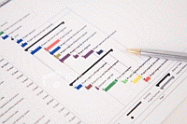Project Boundaries Identification: the What and the Why
The boundaries of a project generally identify what is included within project work. Project boundaries represent one of the components of the scope statement. This component is called “The Project Boundaries Identification”. It clearly defines the extent of the project scope (the scope baseline) and serves as an efficient tool for making decisions on the content of project work. In this article we talk about how to identify the project boundaries and why project boundaries identification is important for implementing a project.
Project Boundaries Statement
In terms of project implementation, the boundaries of a project are the reasonable limits of project work to determine what is included in the project and what’s not. The boundaries are defined as measurable and auditable characteristics and closely linked to project objectives. They create a holistic project perception, determine limits and exclusions of the project, and form the content of project scope in terms of expected results.
To identify and state the boundaries for a project, it is required to clearly define items that are inside and outside of project work. All this is about defining the limits and exclusions for the project. Stakeholders should review a drafted project boundaries statement to decide whether a particular product, service or requirement should be included in the project or not. The project manager uses the statement of project boundaries to set up an improvement plan and define the start and end of the improvement process.
Identifying Project Boundaries
There are several factors to be considered for identifying project boundaries. These factors are:
- Project Goals. What is planned to achieve upon project completion? The project goals will identify the extent of project work and overall duration, so the project boundaries will be defined considering the high-level expectations of the project.
- Key Project Phases. There are five phases defined by the project phasing process. These phases are Measure, Plan, Produce, Introduce, and Manage. The Measure phase and the Manage phase will be the limits of project work in terms of the implementation process.
- Product Scope. The key characteristics (functions and features) of the product being produced by the project are defined in the product scope statement. Project boundaries identification will depend on stakeholder requirements to the product.
- Group Accountability. The roles and responsibilities of the key project participants are defined in the Project Governance Chart which forms group accountability. The project boundaries will depend on group accountability – that is who takes what role to do what task or duty during the implementation process.
Why Identify Project Boundaries
Project boundaries identification helps clearly understand where the project starts and ends. It reduces supervision and the need for control while ensuring higher project performance. Having clearly stated and identified project boundaries allows managers to make a project environment in which individuals and teams are enabled to manage their own activities and tasks to produce expected results, within a defined set of responsibilities and roles.
Project boundaries identification allows improving the overall project management process and increase accountability level by redefining the principles of delegation and teamwork. When you have set up accurate boundaries for your project, groups and individuals can show higher performance and overall accountability because they clearly know what they should do within the project and what is out of their duties.
The identified project boundaries will help you with planning human resources for your project, setting up job requirements and defining team roles and responsibilities. You will gain opportunities for project improvements because individuals will recognize that their performance is based on how they manage their own part of duties in relationship to the entire group.
Project boundaries identification is critical to making the project scope statement. It allows setting up group accountability, including roles and responsibilities. If you have not identified project boundaries your teams will be unable to do their duties and carry out responsibilities, as defined in the Project Governance Chart. There will be no foundation for making delegation and controlling team performance














